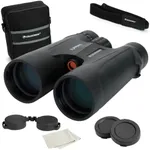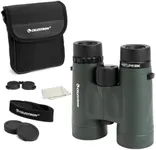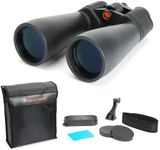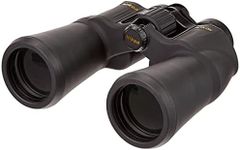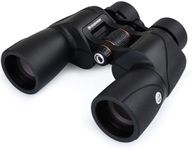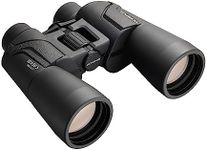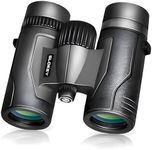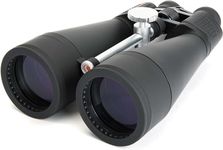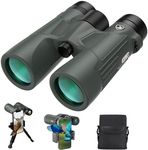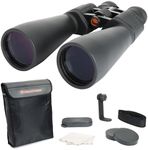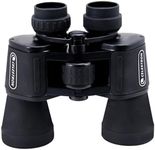Buying Guide for the Best Astronomy Binoculars
Choosing the right pair of astronomy binoculars can greatly enhance your stargazing experience. Unlike telescopes, binoculars are more portable, easier to use, and provide a wider field of view, making them ideal for beginners and casual observers. When selecting binoculars for astronomy, it's important to consider several key specifications that will affect your viewing experience. Understanding these specs will help you find a pair that matches your needs and preferences, whether you're observing the moon, planets, or deep-sky objects.MagnificationMagnification refers to how much larger an object appears through the binoculars compared to the naked eye. In astronomy binoculars, this is usually represented as the first number in a pair, such as 10x50. Higher magnification allows you to see more detail, but it also narrows the field of view and can make the image shakier. For stargazing, a magnification of 7x to 10x is often ideal, as it provides a good balance between detail and stability. If you're interested in observing specific celestial objects in more detail, you might opt for higher magnification, but be prepared to use a tripod for stability.
Objective Lens DiameterThe objective lens diameter is the second number in the binoculars' specification, such as 10x50, and it indicates the size of the front lenses in millimeters. Larger lenses gather more light, which is crucial for viewing faint stars and deep-sky objects. For astronomy, an objective lens diameter of at least 50mm is recommended, as it allows for better light collection and brighter images. If you plan to observe in very dark skies, you might consider even larger lenses, but keep in mind that this will also make the binoculars heavier and less portable.
Field of ViewThe field of view is the width of the area you can see through the binoculars, usually measured in degrees or feet at a certain distance. A wider field of view makes it easier to locate and track celestial objects, especially if you're scanning the sky or observing moving objects like satellites. For astronomy, a field of view of 5 to 7 degrees is generally sufficient. If you're a beginner or enjoy observing large star clusters and constellations, a wider field of view can be particularly beneficial.
Exit PupilThe exit pupil is the diameter of the light beam that exits the eyepiece, calculated by dividing the objective lens diameter by the magnification. It determines how much light reaches your eyes and affects the brightness of the image. For astronomy, an exit pupil of 5mm to 7mm is ideal, as it matches the average dilation of the human eye in dark conditions, providing a bright and clear image. If you plan to use the binoculars in very dark environments, a larger exit pupil can be advantageous.
Weight and SizeThe weight and size of binoculars can significantly impact your comfort during extended viewing sessions. Heavier binoculars can be tiring to hold steady, especially for long periods, and may require a tripod for support. Consider how and where you'll be using the binoculars; if you plan to travel or hike to your stargazing spots, more compact and lightweight models might be preferable. However, larger binoculars often offer better performance in terms of light gathering and image quality, so it's important to find a balance that suits your needs.
CoatingsLens coatings are applied to binoculars to reduce reflections and increase light transmission, resulting in brighter and clearer images. There are different types of coatings, such as fully coated, multi-coated, and fully multi-coated, with fully multi-coated lenses offering the best performance. For astronomy, high-quality coatings are important because they enhance contrast and detail, making it easier to see faint celestial objects. If you're serious about stargazing, look for binoculars with fully multi-coated lenses to ensure the best possible viewing experience.
